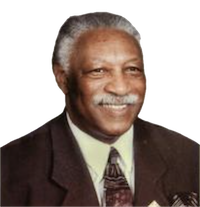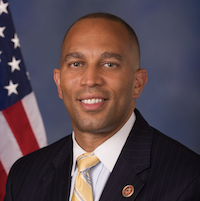As someone who has spent three decades working with hundreds of other public school parents to fight back against school privatization in Ohio, I find myself fascinated this week to read Alec MacGillis’s new profile, published jointly by ProPublica and The New Yorker, of the efforts of religious school boosters to invest our state’s tax dollars in private school tuition vouchers. MacGillis definitely expands on the history that I know personally.
A prominent part of this history has centered on a second goal. Efforts by ideologues to undermine the First Amendment Establishment Clause’s prohibition of state sponsored religion have from the beginning also been at the heart of the Ohio battle over vouchers. In his 1999 decision, when the Cleveland Voucher Program was challenged in a Cleveland federal court, Judge Solomon Oliver found the Cleveland Voucher Program unconstitutional: “A program that is so skewed toward religion necessarily results in indoctrination attributable to the government.” 1
After a federal appeals court upheld Judge Oliver’s decision that Cleveland’s vouchers were unconstitutional, the far-right Institute for Justice, with litigator Clint Bolick, found an appropriate plaintiff who appealed to the U.S. Supreme Court—an early chapter in a two decades series of test cases designed to undermine of the protection of the separation of church and state by the First Amendment’s Establishment Clause. In 2002, in the case known as Zelman v. Simmons-Harris, the U.S. Supreme Court overturned Oliver’s decision, declaring that as long as the voucher was awarded to the parents, not the private religious school, the Cleveland Voucher Program met the standard for a fully constitutional program.
The Cleveland Voucher Program had been operating for several years even before the lawsuit challenged its legality. And the press had paid attention. “Plaid Skirt Welfare!” screamed the unforgettable headline from a 2001 issue of the Cleveland Scene. And in 1999, the Akron Beacon Journal‘s Dennis Willard and Doug Oplinger published a ground breaking investigative report, Whose Choice?, which examined Ohio’s vouchers and Ohio’s newer charter schools, and declared, “Voucher System Fails Far Short of Goals: Intended to benefit underserved public-school kids, program has become a blessing for Catholic institutions.” In another section of the same investigation, Willard and Oplinger reported: “Voucher Plan Leaves Long List of Broken Vows: Program costs public schools, doesn’t raise private enrollment and leaves handicapped students behind.”
In his new report this week, MacGillis profiles some of the key players in the three decades history of Ohio vouchers. He digs into the correspondence archives of George Voinovich, who served as governor from 1991 to 1998: “The campaign in Ohio provides an object lesson—a model that voucher advocates have deployed elsewhere. Its details are recorded in a trove of private correspondence, much of it previously unpublished that the movement’s leaders in Ohio sent to one another. The letters reveal a strategy to start with targeted programs that placed needy kids in parochial schools, then fight to expand the benefits to far richer families — a decades long effort by a network of politicians, church officials and activists, all united by a conviction that the separation of church and state is illegitimate.”
MacGillis continues: “In the early 1990s, Ohio’s Catholic bishops faced a problem. For more than a century, religious education had been deeply entrenched in the state; in Cleveland, the parochial system was one of the largest in the country. For decades, though, the Church’s urban schools had been losing students to suburban flight. To keep up enrollment, many were admitting more black students, often from non-Catholic families. But these families typically could not afford to pay much, which put a strain on church budgets… The new Republican governor, George Voinovich, was a devout Catholic…. Voinovich corresponded frequently with the state’s most prominent bishops, in Cleveland, Columbus, and Cincinnati. Their letters, which are collected in Voinovich’s papers at Ohio University, show a close and collaborative relationship… Most of all , they strategized about increasing state funding for Catholic schools.”
Voinovich found allies, among them David Brennan, who chaired Voinovich’s Commission on School Choice. Only years later did Brennan abandon the voucher cause when he discovered that his chain of charters, under the control of his own for-profit White Hat Management company, would be more lucrative.
But there were definitely strong opponents. MacGillis features State Board of Education member C.J. Prentiss, a dogged African American teacher and child advocate who believed Cleveland’s public schools must be improved to better serve andprotect the rights of Cleveland’s poorest children. Prentiss went on to serve for eight years in the Ohio House and another eight years in the Ohio Senate. She declared: “It is difficult to see how subsidizing private schools will improve public education… Private schools have selective entrance requirements, serve only private purposes, and are not accountable to the public.” “There is a crisis… The question before us is, how do we improve the public schools?”
Senator Prentiss retired from the Legislature in 2006, perhaps coincidentally the same year as Matt Huffman won a seat in the Ohio House. MacGillis describes Huffman, now in 2025 Ohio’s all powerful legislative leader, as devoted from his earliest years in the legislature to expanding the number of vouchers available for religious schools. From 2006 to 2011, when Democrat Ted Strickland served as Ohio’s governor, Huffman could not make significant progress in expanding the vouchers. But Huffman has never wavered from his goal: “You pay taxes, I pay taxes… Why can’t my taxes go toward my children’s school?”
MacGillis tracks the growing power of Huffman’s greatest ally fighting for voucher expansion: the Columbus-based evangelical advocacy and lobbying organization, the Center for Christian Virtue, formerly Citizens for Community Values. Today, reports MacGillis, “(T)he Center for Christian Virtue is stronger than ever. The organization has assembled a network of dozens of religious schools, which pay the center $5 per enrolled student, up to $3,000 per-school, to lobby on their behalf. In effect, the state’s religious schools can now use some of the public money they receive to advocate for the flow of funding to increase.”
Slowly over a number of budget cycles, as the legislative GOP majority has grown into a supermajority, Huffman has doggedly pursued his goal of expanding the availability of tax-funded vouchers for private school tuition. And into the two-year state budget, passed in June 2023, “Huffman and his counterparts used a maneuver that would have been familiar to George Voinovich: they slipped an expansion of vouchers into the budget, a 1,200-page document they sent to Gov. Mike DeWine just before the deadline. Families with incomes of up to 450% of the poverty level would qualify for full payments… These sums came close to covering tuition at many Catholic schools, and far exceeded what many public districts received in per-capita funds from the state. Even families making more than that income threshold… would qualify for some funding.”
MacGillis describes the result in Lima, Ohio, Matt Huffman’s hometown: “Virtually all the students enrolled in Catholic schools there now receive vouchers. Enrollment at these and other parochial schools has not increased dramatically; as is true across the state, they have limited capacity, so they accept only those students they prefer. This undermines the narrative that vouchers allow families to escape their public school. But public schools still suffer.”
MacGillis reports on the Vouchers Hurt Ohio lawsuit, in which 200 public school districts argue that the voucher program has “exacerbated racial segregation” and that the vouchers “violate two principles of the state constitution: a bar against religious control of public school funds and a promise of an adequate education for all.”
In Ohio today, we are watching the impact of the state’s massive investment in private school tuition vouchers. Just two weeks ago, the Ohio Capital Journal‘s Morgan Trau reported that Matt Huffman, now House Speaker, has declared that because the state is short of money, the Ohio Legislature will be unable to fully fund the last step in a six-year (three budget) phase-in of a new Ohio public school funding formula for the schools that serve 1.7 million Ohio children and adolescents. The phase-in of this painstakingly designed Fair School Funding Plan was launched in 2021 to repair a public school funding system deemed unconstitutional several decades ago because it is inadequate and inequitable. Earlier this week, I wrote about Huffman’s declaration that the Fair School Funding Plan is “unsustainable.” While Huffman blames what he calls the state’s funding shortage on the termination of federal COVID relief, in fact the more likely cause is the expense of Huffman’s $1 billion-a-year universal vouchers along with years of state tax cuts passed by the Huffman-led Ohio Legislature.
__
1 Quoted from Steve Benen, “Scholarship Aid to Ohio Religious schools Violates Church-State Separation, Federal Court Rules,” Vol.53, No. 2, Church & State, p. 5, published by Americans United for Separation of Church and State, but unavailable online.
• • •• • •
Jan Resseger writes regularly about public education issues. Read the original article here.
R E L A T E D:














